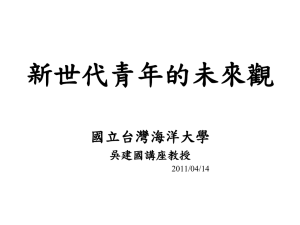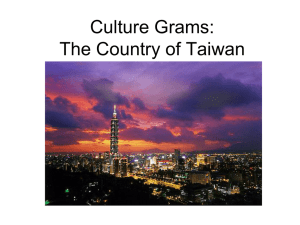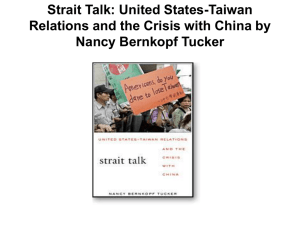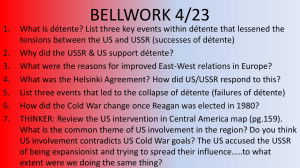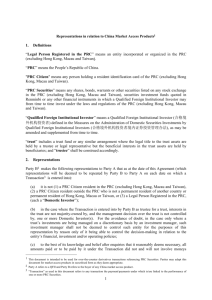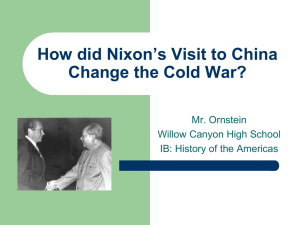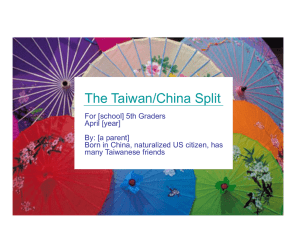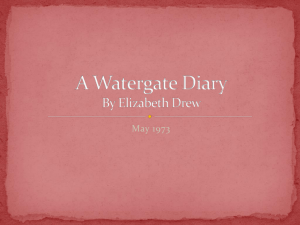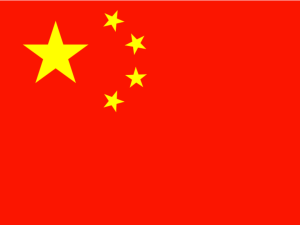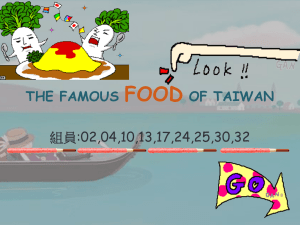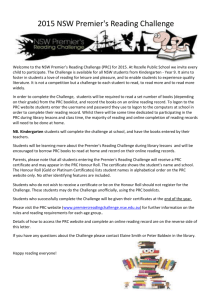The United States and China
advertisement
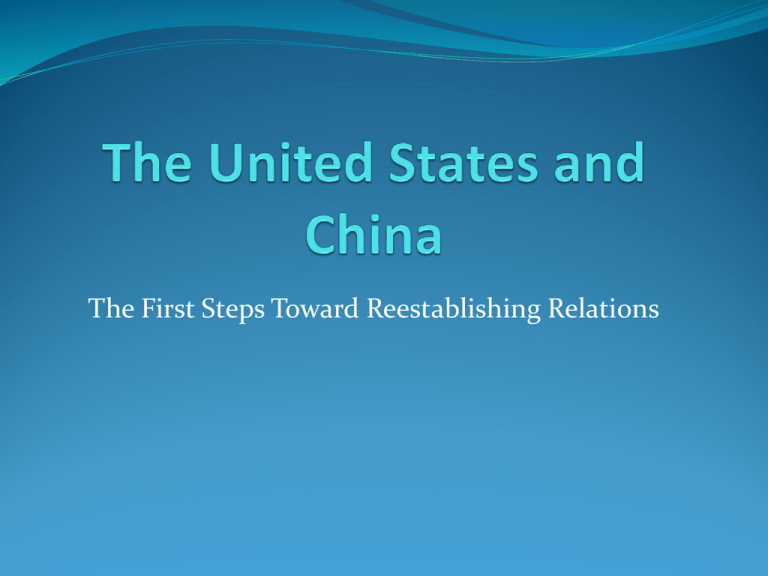
The First Steps Toward Reestablishing Relations Changing Relations The late 1960s and 1970s saw a reordering of the world power structure. Détente was the new view of the major powers. The period saw the weakening of the bipolar power structure with the rise of China, Japan and Western Europe as economic and military powers. U.S. – China Relations The United States saw the PRC as totally illegitimate and continued to support Nationalists on Taiwan. China saw this as American imperialism. U.S. opposed PRC admission to the United Nations. Widening Feud During the 1950s, the Soviets and other communist nations supported and traded with China. Like the US itself, the Americans pressured its allies and other nations not to recognize the PRC or allow UN membership. In 1964, the French broke ranks and gave diplomatic recognition to China. Sino-Soviet Split During the 1960s, national interests trumped “socialist solidarity” as the relations between the USSR and PRC deteriorated. Split grew into open conflict and near war by the end of the 1960s. American gov’t saw an opportunity to use the split to the advantage of the United States. First Steps In the early 1970s subtle overtures between the US and the PRC began to develop. President Nixon began to refer to the nation as the “People’s Republic of China,” not “Red China” or “Communist China” as he and previous presidents had done. Ping Pong Diplomacy Chinese welcomed the change in tone from the US. China invited the US table tennis team to China to participate in tournament. Nixon relaxed the trade embargo with China. Sec. of State Henry Kissinger took secret trip to China in July, 1971 to set groundwork for future meetings. Nixon Goes to China In Feb. 1972, Nixon made a two- week-long state visit to China. Shook the hand of Premier Zhou Enlai. Cameras and journalist followed Nixon’s visit and publicized it to the world. First time many had seen the closed nation. Why Nixon? Nixon had strong anti- communist credentials. Only someone from his background could pull off such a move. Democrats had a bad rap when it came to dealing with communism – lost China and Korea. Benefit to China Counter the growing Soviet threat. Soviets had increased their troop presence on the Chinese border. China wanted to avoid war with either or both (US and USSR) China wanted to gain entry to the UN. China wanted to gain trade opportunities. Benefit to U.S. New balance of power – relationship with China could counter Soviet Union. Nixon and Kissinger saw a new multi-polar world that the US could deal with successfully. US saw opportunities for trade in China’s huge market. Problem of Taiwan Problem of Taiwan continued to linger over the opening of US and Chinese talks; US said Taiwan gov’t was only legitimate gov’t of China. US moderated approach calling for “Two Chinas” Both PRC and Rep. of China (Taiwan) opposed this plan. Talks Begin China insisted that talk of Taiwan be on the table; US agreed. US ended objection to the PRC joining the UN; it did so in October 1971. PRC took Taiwan’s seat on the Security Council. Shanghai Communiqué Announcement made by Kissinger and Zhou: There was one China and Taiwan was a part of it. The two gov’t’s were to find a peaceful settlement to their differences. US would remove forces from Taiwan. China would not try to retake Taiwan by force. Delays Full relations were not achieved until 1979. Why? – Taiwan was still and issue as well as issues of leadership in China and US. Watergate and its aftermath lessened the focus of the US gov’t. Mao and Zhou die in 1976, causing leadership struggle. Not until 1978 do negotiations between US Pres. Jimmy Carter and new Chinese leader Deng Xiaoping do formal relation become a reality. Full Relations Full relations between US and PRC achieved in Jan. 1979. US ended its official ties with Taiwan (US continued trade and arms sales to the Taiwanese) Taiwan denounced the move, but continued strong trade links with the US. Consequences Opening of the trade relationship between the US and the PRC would have major consequences for the world economy. Other nations followed the US and recognized the PRC. Japan and China normalized relations, leading to major trade relationship and greater stability in East Asia.
